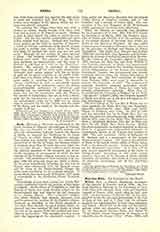

Breda (BREDANA), Diocese of, situated in the Dutch province of Brabant and suffragan of Utrecht. The city was founded in the twelfth century and with the surrounding territory formed the Barony of Breda, an imperial fief hereditary in the house of Nassau to which Queen Wilhelmina belongs. This barony was formerly within the ecclesiastical jurisdiction of the See of Liege, but became subject to Antwerp when Pius IV made that city (1561) the seat of a new diocese. Breda suffered much during the political disorders of the sixteenth and seventeenth centuries, in consequence of which the free exercise of the Catholic religion was more or less restricted. The iconoclasts in their outbreak of 22 Au-gust, 1566, left some sad traces yet visible at Breda. In the years immediately following, the city and its district were alternately held by Spanish troops and by those of the States-General, though the latter were destined to be its eventual masters. It passed finally into their hands October 10, 1637, when it surrendered to the Stadtholder, Prince Frederick Henry.
Thenceforth, as was their custom, the Dutch Protestants prohibited strictly the exercise of the Catholic religion. At the Peace of Westphalia in 1648 the Barony of Breda was made directly subject to the States-General and lost thereby the last remnants of its ancient liberty. The “reformed” religion was alone allowed, and rigorous measures were used to prevent the exercise of the Catholic religion. However, as elsewhere in the Dutch provinces it was kept alive secretly by good priests whose exemplary zeal was imitated by their flocks, in whom the love of the ancient Faith was purified and intensified by persecution. This unhappy situation lasted until the beginning of the nineteenth century. A
little earlier the Batavian Republic had proclaimed (1796) liberty of religious worship, and in this Catholics saw a presage of better days. The constitution of the new Kingdom of the Netherlands (1815) guaranteed this boon more effectively.
When the Diocese of Antwerp was abolished by the Concordat of July 15, 1801, Pius VII created by his Brief of March 22, 1803, the Vicariate Apostolic of Breda and allotted to it the northern part of the former Diocese of Antwerp, then within the limits of the Batavian Republic. He also added thereto a part of the former Diocese of Ghent, situated in the province of Zeeland and known as Staats Vlaanderen. The Right Rev. Adriaan van Dongen (1803-26) was the first vicar Apostolic, and he established the diocesan (theological) seminary at Hoeven. By the terms of the Concordat, signed August 17, 1827, between the Holy See and King William I, the Vicariate Apostolic of Breda was incorporated with the new See of Bois-le-Duc, whereby the ecclesiastical independence of the former was seriously threatened. Indeed, this arrangement was already becoming effective when the Belgian Revolution of 1830 broke out. The final separation of Belgium from Holland (1831) now made it impossible to execute the Concordat of 1827. The ecclesiastical situation, therefore, remained unchanged, except that the vicar Apostolic of Breda was made temporarily administrator Apostolic. When Pius IN reestablished the hierarchy in Holland by his Brief, “Ex qua die” (March 4, 1853), the Vicariate Apostolic of Breda was made one of the four suffragans of the new Archdiocese of Utrecht.
The first bishop of the new See of Breda was its vicar Apostolic, the Right Rev. Jan van Hooydonk, Apostolic administrator since 1826, and titular Bishop of Dardania since 1842. He died in 1867 and was succeeded first by the Right Rev. Jan van Genk who held two diocesan synods (1868, 1869) and died in 1874; later by the Right Rev. Hendrik van Beek, a celerated Hellenist, who died in 1884; and then by the Right Rev. Peter Leyten. Besides the above-mentioned theological seminary at Hoeven there is a preparatory ecclesiastical seminary at Oudenbosch, known as De Ypelaar and founded in 1839. The new cathedral (1875) is dedicated to St. Barbara and is a masterpiece of the famous Dutch architect Cuypers. The finest of the churches of Breda is the superb Gothic edifice of Notre Dame, built in the fifteenth century. It has long been held by the Protestant community. In it may still be seen several sepulchral monuments of the house of Orange-Nassau. According to the most recent statistics there are in the Diocese of Breda 198,000 Catholics, 100 parishes, 245 priests in actual service, 23 charitable institutions, and 59 free (Catholic) schools.
GISBERT BROM

